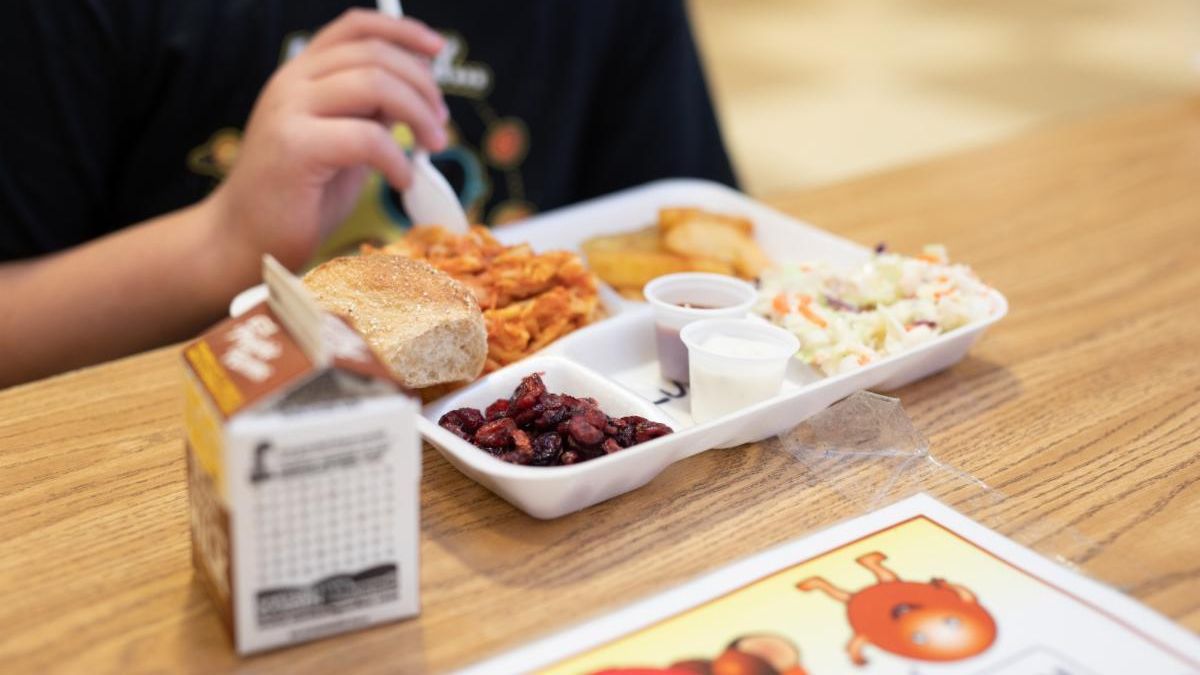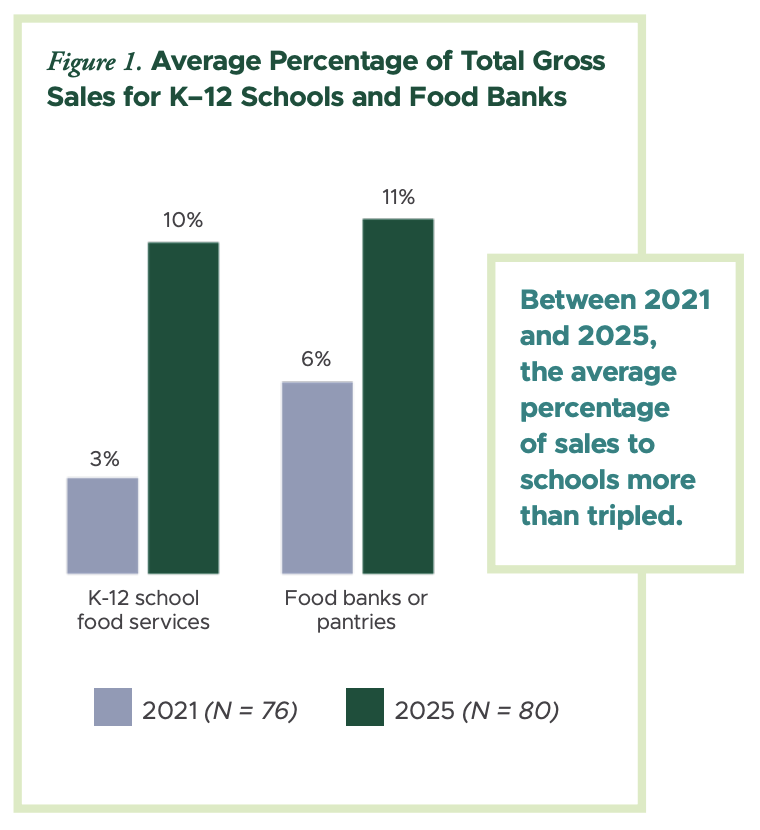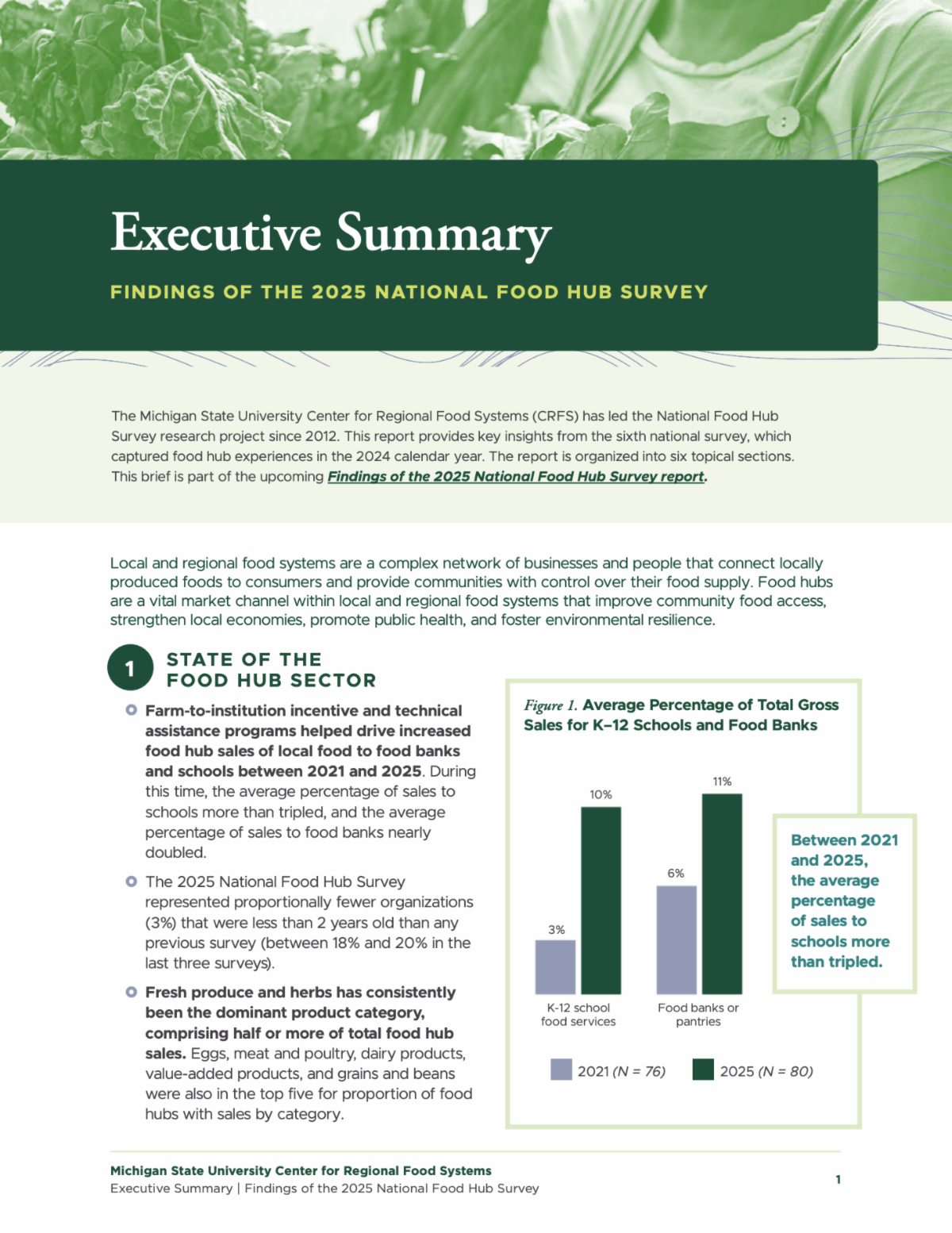| Dr. Jude Barry, CRFS Associate Director and report co-author, comments on some of the unique findings in this survey, “Our survey results indicate that food hubs are selling a lot more to school food programs and food banks in 2024 than they were in 2021. Coupled with food hubs expressing the value of grant programs to their business, one can see the positive influence of funding on local food procurement in communities.”
According to the analysis of results from 2025 National Food Hub Survey, food hub survey respondents' total gross sales greatly increased to K-12 schools and food banks between 2021 and 2025. Alongside that, over 50% of responding hubs have relied on grant funding. This type of funding, often from the federal or state-level, is the dominant source that encourages and enables institutions, such as schools and hospitals, to purchase local produce from food hubs.
Despite most hubs reporting that they expect increased sales in the years ahead, hubs are also facing increased operating costs and profitability pressures. Hubs reported that their other main concern in the financial landscape is the decreased availability and uncertainty of federal funding. As community and economic connectors, food hubs are critical pieces of the food system that strengthen local economies and promote public health. From the Survey, responding food hubs stated that local food sourcing, farmer viability, regional food systems resilience, and access to healthy food for consumers were their top values.
“Collectively, the hubs represented in this year’s survey purchased from nearly 5,000 different farms, most of which were small or mid-sized,” said Kathryn Colasanti, Senior Evaluation Associate at UM PEG and report co-author. “Food hubs do more than move food — they create profitable markets for the farmers in their area and link community members to farm-fresh foods.” | 











No comments:
Post a Comment
Note: Only a member of this blog may post a comment.